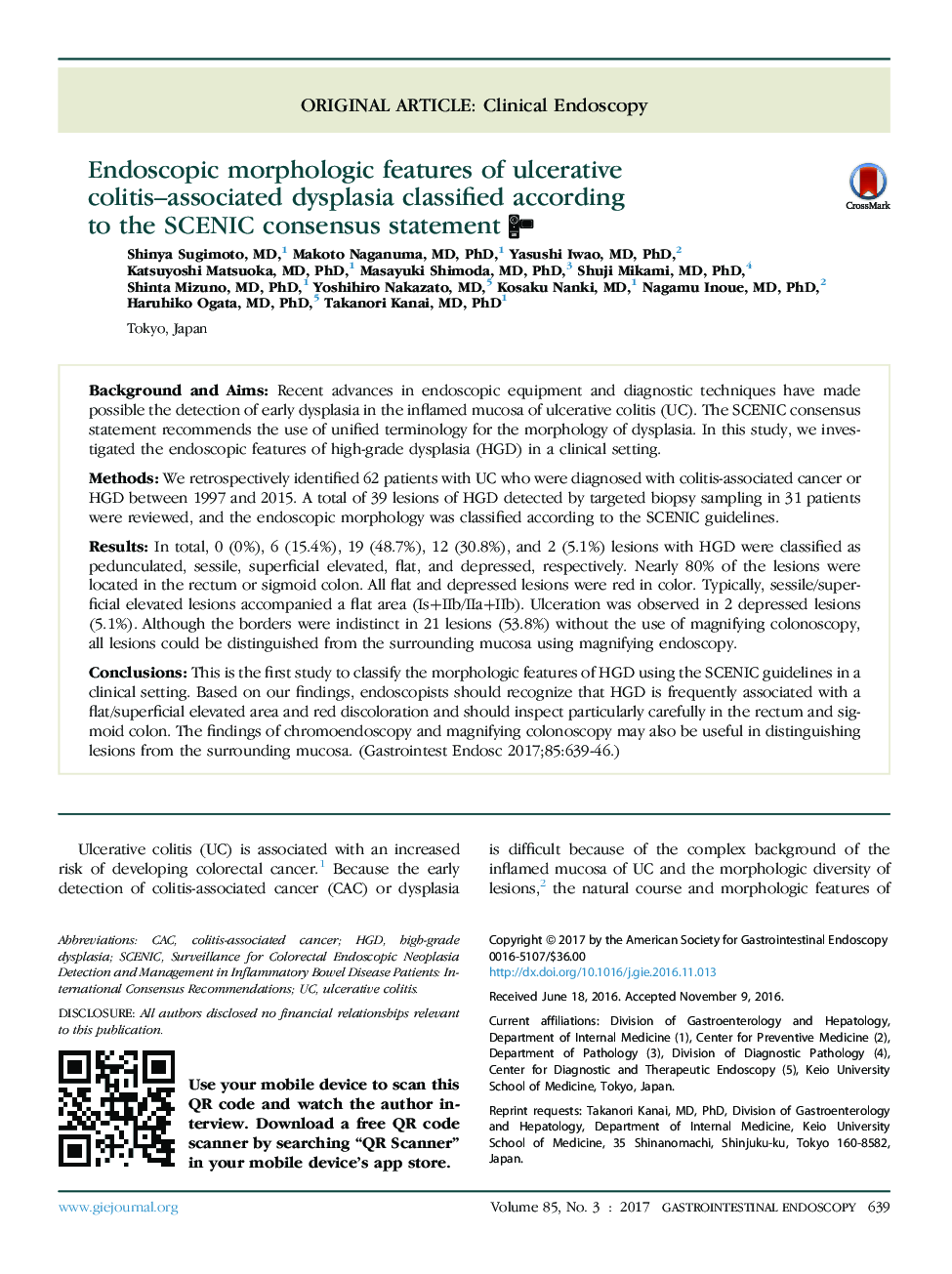| کد مقاله | کد نشریه | سال انتشار | مقاله انگلیسی | نسخه تمام متن |
|---|---|---|---|---|
| 5659478 | 1407464 | 2017 | 10 صفحه PDF | دانلود رایگان |

Background and AimsRecent advances in endoscopic equipment and diagnostic techniques have made possible the detection of early dysplasia in the inflamed mucosa of ulcerative colitis (UC). The SCENIC consensus statement recommends the use of unified terminology for the morphology of dysplasia. In this study, we investigated the endoscopic features of high-grade dysplasia (HGD) in a clinical setting.MethodsWe retrospectively identified 62 patients with UC who were diagnosed with colitis-associated cancer or HGD between 1997 and 2015. A total of 39 lesions of HGD detected by targeted biopsy sampling in 31 patients were reviewed, and the endoscopic morphology was classified according to the SCENIC guidelines.ResultsIn total, 0 (0%), 6 (15.4%), 19 (48.7%), 12 (30.8%), and 2 (5.1%) lesions with HGD were classified as pedunculated, sessile, superficial elevated, flat, and depressed, respectively. Nearly 80% of the lesions were located in the rectum or sigmoid colon. All flat and depressed lesions were red in color. Typically, sessile/superficial elevated lesions accompanied a flat area (Is+IIb/IIa+IIb). Ulceration was observed in 2 depressed lesions (5.1%). Although the borders were indistinct in 21 lesions (53.8%) without the use of magnifying colonoscopy, all lesions could be distinguished from the surrounding mucosa using magnifying endoscopy.ConclusionsThis is the first study to classify the morphologic features of HGD using the SCENIC guidelines in a clinical setting. Based on our findings, endoscopists should recognize that HGD is frequently associated with a flat/superficial elevated area and red discoloration and should inspect particularly carefully in the rectum and sigmoid colon. The findings of chromoendoscopy and magnifying colonoscopy may also be useful in distinguishing lesions from the surrounding mucosa.
Journal: Gastrointestinal Endoscopy - Volume 85, Issue 3, March 2017, Pages 639-646.e2